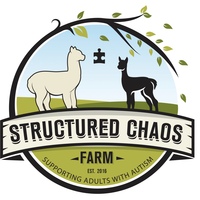The Alpaca Business
Alpacas are scarce and unique, and the textiles produced from their fleeces are in demand at fashion centers in New York, Paris, Milan, and Tokyo. There are excellent profit opportunities and tax advantages available to alpaca breeders. Historically, alpacas sustained ancient cultures, including the Incas of Peru. Today, alpacas still represent the primary source of income for thousands of South Americans. History has validated the value of the alpaca.
Long before stocks were sold on the New York Stock Exchange, livestock was a traditional form of wealth for many cultures. The richest families of ancient times counted their wealth by the size of their herds. Today wealth as a result of livestock ownership is not as common, but opportunities do exist for profitable farms and ranches. Tending to a herd of graceful alpacas can be an exciting source of revenue, and a rewarding lifestyle.
A key question to answer before starting a new venture is, WHY? Why are you considering becoming an alpaca owner?
Many breeders will work with you to develop a plan designed for your particular situation; however, you are encouraged to independently develop your own financial analysis utilizing professional support if necessary. As a buyer you need to be certain that starting an alpaca business is an appropriate use of both your time and financial resources.
Analyzing the feasibility of alpaca ownership requires making a set of assumptions. Determining the costs associated with raising the animals and how much revenue they might generate in the future are the basic elements used in projecting a return on the investment. The assumptions found here are based on many breeders’ experiences.
The hands-on method of raising alpacas, as either a part- or full-time business, requires that the alpaca breeder own a small ranch or acreage, properly fenced with a small barn or shelter. Many farms already have outbuildings suitable for alpacas. The alpaca owner is presumed to supply the day-to-day labor.
A second approach is to purchase the animals and place them in the care of an established breeder. This arrangement for care and boarding of an animal on behalf of another is known as “agistment.” Under this method you, as owner, typically make the important decisions about care, breeding, sales, etc.
January 12, 2019
